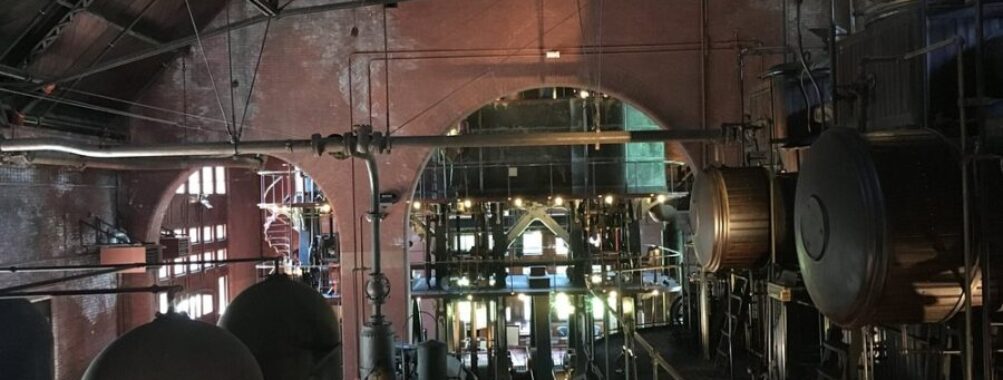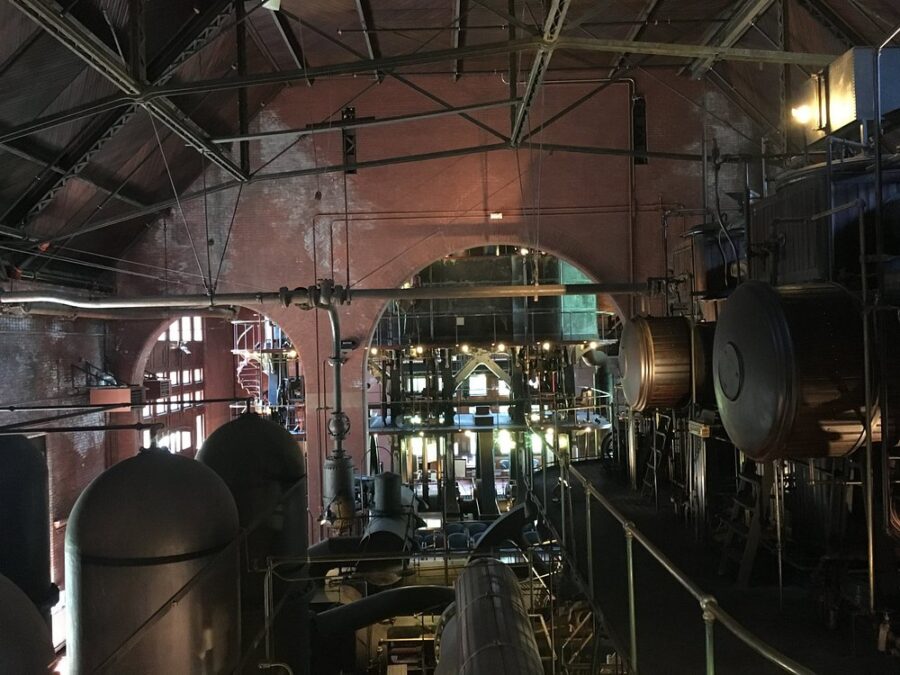
Metropolitan Waterworks Museum
Table of Contents
History and Significance

The history of the Metropolitan Waterworks Museum is deeply intertwined with the development of Boston’s water supply. Established in the late 19th century, it served as a crucial pumping station that helped deliver millions of gallons of water each day to the city. This architectural marvel not only represents the ingenuity of its time but also underscores the importance of a reliable water system for public health. The museum interprets these unique stories through engaging exhibitions that highlight the evolution of waterworks in the region. Visitors can learn about the steam engines and pumps that played a significant role in maintaining the waterworks system, making it one of the country’s first metropolitan water systems.
The Metropolitan Waterworks Museum stands as a testament to the historical significance of waterworks engineering in Boston. The museum showcases how the city developed its water systems to ensure public health and safety. From the early hand pumps to the steam engines that powered the waterworks, each exhibit tells a story about the challenges and triumphs of providing clean water to the growing city. It’s fascinating to think about how these innovations laid the groundwork for modern water systems today. As one of the country’s first metropolitan water systems, it’s clear that the history of this museum reflects the broader narrative of urban development and innovation.
Main Attractions and Activities
The Metropolitan Waterworks Museum is packed with attractions that cater to both history lovers and families looking for an educational outing. One of the main highlights is the stunning waterworks building that houses impressive steam engines and exhibits detailing the evolution of Boston’s water system. Visitors can participate in special access tours that delve deeper into the inner workings of the pumping station, making it a hands-on learning experience. The museum also offers educational programs designed for school groups, ensuring that younger generations understand the importance of waterworks and public health.
In addition to its fascinating permanent exhibitions, the museum hosts various events throughout the year. From special lectures on water conservation to family-friendly activities like scavenger hunts, there’s always something happening at the Metropolitan Waterworks Museum. The combination of historical artifacts, interactive displays, and expert-led tours creates an engaging atmosphere that brings the story of Boston’s waterworks to life. Whether you’re interested in engineering, or social history, or simply want to learn more about how water systems operate, the museum presents a wealth of information and activities for all ages.
Visitor Experience
Visiting the Metropolitan Waterworks Museum is an engaging experience that transports you back in time. As you step into the impressive pumping station at 2450 Beacon Street, you’ll be greeted by knowledgeable staff who are passionate about the museum’s rich history. The museum is designed to be both informative and enjoyable, with a variety of exhibits that cater to different interests. You can explore the intricacies of the waterworks system through hands-on displays, interactive installations, and captivating storytelling that highlights the social history of Boston’s water supply.
The ambiance of the museum adds to the overall visitor experience, with its beautiful architecture and historical artifacts creating a sense of wonder. The layout encourages exploration, allowing visitors to wander through the various exhibitions at their own pace. Whether you’re reading about the engineering marvels that propelled the first metropolitan water systems or watching videos showcasing the museum’s unique stories, every corner offers something new to discover. Additionally, the museum’s location near the Chestnut Hill Reservoir provides a picturesque backdrop, enhancing your visit even further.
Tips for Visitors
Another tip is to allocate enough time to explore the various exhibitions thoroughly. The museum is rich in history and offers detailed information on the development of Boston’s water system. Make sure to bring a camera, as the stunning architecture and fascinating exhibits provide plenty of photo opportunities. If you’re visiting with family, consider planning a scavenger hunt to engage younger visitors in a fun and interactive way. Lastly, don’t forget to check out the museum’s gift shop for unique souvenirs related to waterworks history!
Accessibility and Facilities
The Metropolitan Waterworks Museum is committed to ensuring that all visitors have a comfortable and enjoyable experience. The museum offers various accessibility features, including ramps and elevators, making it easy for those with mobility challenges to navigate the building. Additionally, the staff is trained to assist visitors with any special needs, ensuring everyone can enjoy the rich history of Boston’s waterworks. Facilities such as restrooms and seating areas are also available throughout the museum, providing convenience during your visit.
Moreover, the museum is located in a spacious environment, allowing for easy movement even during busier days. There’s ample parking available for those driving to the museum, making it accessible for families and groups. If you’re taking public transportation, the museum’s location is also convenient, with nearby bus stops and train stations. Overall, the Metropolitan Waterworks Museum prioritizes visitor comfort and accessibility, ensuring that everyone can take part in exploring the fascinating history of Boston’s water systems.
Unique Features
One of the most unique features of the Metropolitan Waterworks Museum is its stunning architectural design, which reflects the grandeur of 19th-century engineering. The building itself, a former pumping station, is a historical landmark that showcases the beauty of industrial architecture. Visitors are often captivated by the impressive steam engines on display, which serve as a testament to the innovative technology used in the early waterworks systems. These machines not only highlight the engineering prowess of the time but also illustrate the importance of reliable water systems for public health.
Additionally, the museum’s exhibitions are curated to provide visitors with a comprehensive understanding of the social history surrounding Boston’s water supply. Through various interactive displays and artifacts, guests can learn about the evolution of the waterworks and its impact on the community. The museum also emphasizes the importance of water conservation and the role that these historical systems play in our modern lives. This blending of history, technology, and social awareness creates a unique experience that sets the Metropolitan Waterworks Museum apart from other attractions in the area.
Overall Impressions
Overall, the Metropolitan Waterworks Museum leaves a lasting impression on its visitors. The combination of rich history, stunning architecture, and engaging exhibitions offers a unique glimpse into the evolution of Boston’s water systems. Many visitors leave feeling enlightened about the importance of waterworks and how they contribute to public health and community well-being. The museum successfully blends education and entertainment, making it an ideal destination for families, school groups, and history enthusiasts alike.
The atmosphere within the museum is inviting and informative, encouraging guests to explore and interact with the exhibits. The staff is friendly and knowledgeable, always eager to share insights about the museum and its history. This welcoming environment makes for a pleasant visit, whether you’re there for a few hours or planning to spend the whole day. Overall, the Metropolitan Waterworks Museum is a hidden treasure in Massachusetts that offers a memorable experience for all who walk through its doors.
Pros and Cons
Like any destination, the Metropolitan Waterworks Museum has its pros and cons. On the positive side, the museum offers a unique perspective on Boston’s water systems, making it a standout attraction for those interested in engineering, history, and public health. The engaging exhibitions and the stunning architecture of the pumping station create a memorable experience. Additionally, the museum is conveniently located near the Chestnut Hill Reservoir, providing a beautiful setting for visitors to explore.
On the flip side, some visitors may find that the museum’s size limits the number of exhibits available. While the historical content is rich, those looking for a larger, more expansive museum experience might feel it falls short. Furthermore, the museum’s specific focus on waterworks may not appeal to everyone, especially those who prefer broader themes in museums. However, for those interested in the fascinating world of water systems and their impact on urban development, the Metropolitan Waterworks Museum is undoubtedly a worthwhile destination.
Location
Places to Stay Near Metropolitan Waterworks Museum
Find and Book a Tour
Explore More Travel Guides
No reviews found! Be the first to review!